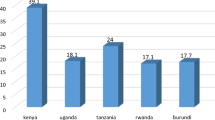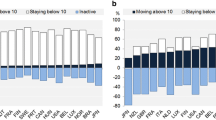Abstract
Funding shortages are analysed in the context of a simple neoclassical model of the micro-firm that uses financial capital for its operations. It predicts that a response to funding shortages is to substitute part-time workers for full-time workers, under the assumption that the latter are the more financial capital intensive employees. The experience of funding gaps in finance capital by long-lived micro-firms is investigated using data which were obtained by telephone interviews. The micro-firms examined had an average size of six full-time and two part-time workers, and an average age of fifteen years. Using probit estimators of the probability of experiencing funding shortages it is found that a strong and significant negative association exists between the number of part-time workers and the probability of experiencing funding shortages, refuting the simple neoclassical hypothesis, and suggesting an alternative hypothesis, emphasising the flexibility advantages of part-time embloyees in averting funding shortages. A ten per cent increase in part-time employees is shown to reduce the probability of experiencing funding shortages by two and a half per cent. A regional effect was also discovered, and bivariate probits gave results which were consistent with univariate probits.
Similar content being viewed by others
References
AcsZ. J., D. B.Audretsch and B.Carlsson1990, ‘Flexibility, Plant Size and Indusrial Restructuring’, in Z. J.Acs and D. B.Audretsch (eds.), The Economics of Small Firms: A European Challenge, Dorderecht: Kluwer Academic Publishers, pp. 141–154.
AmemiyaT., 1985, Advanced Econometrics, Oxford: Basil Blackwell.
AshfordJ. R. and R. R.Sowden, 1970, ‘Multivariate Probit Analysis’, Biometrics 26, 535–546.
GreeneW. H., 1984, ‘Estimation of the Correlation Coefficient in a Bivariate Probit Model Using the Method of Moments’, Economic Letters 16, 285–291.
Industry Department for Scotland, 1989, ‘Towards Highlands and Islands Enterprise’, Edinburgh: HMSO.
Industry Department for Scotland, 1989, ‘Towards Scottish Enterprise’, Edinburgh: HMSO.
MataJ., 1994, Firm Growth During Infancy, Small Business Economics 6, 27–39.
MuthenB., 1979, ‘A Structural Probit Model with Latent Variables’, Journal of the American Statistical Association 74, 807–811.
MyersS. C., 1984, ‘The Capital Structure, Puzzle’, Journal of Finance 39, 581–582.
ReidG. C., 1987, Theories of Industrial Organization, Oxford, U.K.: Basil Blackwell.
ReidG. C., L. R.Jacobsen and M. E.Anderson, 1993, Profiles in Small Business: A Competitive Strategy Approach, London: Routledge.
Reid, G. C. & M. E. Anderson, 1992, ‘A New Small Firms Database: Sample Design, Instrumentation and Summary Statistics’, Department of Economics and CRIEFF Discussion Paper, University of St. Andrews.
StoreyD. J., 1994, Understanding the Small Business Sector, London: Routledge.
VickersD., 1987, Money Capital in the Theory of the Firm, Cambridge, U.K.: Cambridge University Press.
Author information
Authors and Affiliations
Additional information
Professor in Economics and Director of the Centre for Research into Industry, Enterprise, Finance and the Firm (CRIEFF), University of St Andrews.
Rights and permissions
About this article
Cite this article
Reid, G.C. Mature micro-firms and their experience of funding shortages. Small Bus Econ 8, 27–37 (1996). https://doi.org/10.1007/BF00391973
Accepted:
Issue Date:
DOI: https://doi.org/10.1007/BF00391973




